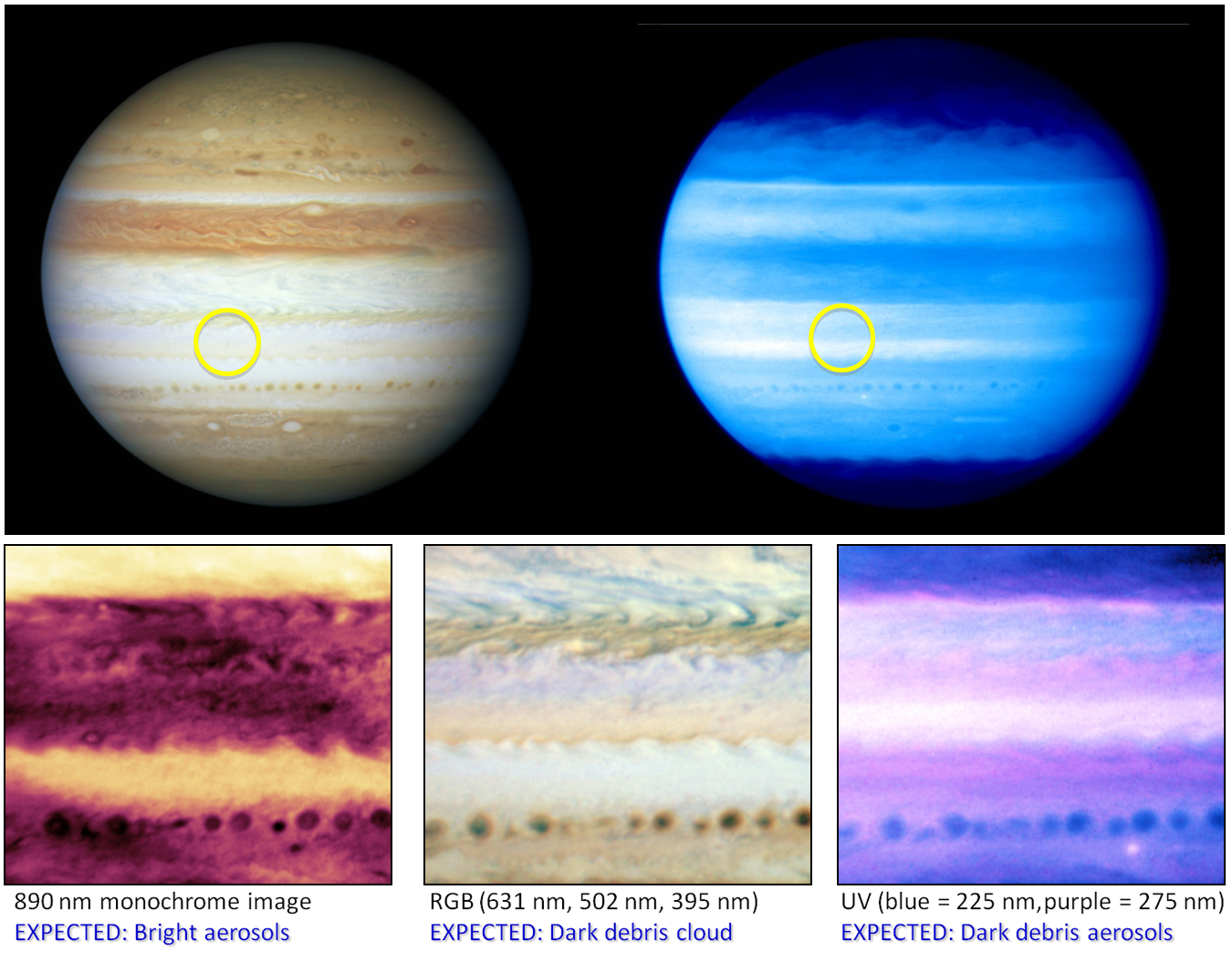 Please report your possible impact detections to Ricardo Hueso,
Marc Delcroix, and Imke de Pater,
as well as your collaborators and astronomical forums. A quick new of an impact
is crucial as it may help other observers to realize they may have observed the same impact and may trigger Jupiter observations on large
telescopes.
Please report your possible impact detections to Ricardo Hueso,
Marc Delcroix, and Imke de Pater,
as well as your collaborators and astronomical forums. A quick new of an impact
is crucial as it may help other observers to realize they may have observed the same impact and may trigger Jupiter observations on large
telescopes.
Follow-up observations: There have been many programs to run Jupiter observations with the Hubble Space Telescope in case of an exceptionally bright flash event on Jupiter. Images on the right show HST follow-up observations after the first flash event on Jupiter acquired with HST 77 hrs after the impact. HST did not observe any debris field in the planet after this impact confirming the small size of the object hitting the planet. However, after an exceptional object hitting Jupiter a dark debris field can be formed on the planet and observed with amateur telescopes as it happened in June 1994 and July 2009 after the impacts by the comet Shoemaker-Levy 9 and the "Bird impact" discovered by Anthony Wesley. Observations in the visible may show a dark spot on Jupiter. Observations in methane band may show a bright feature. For any impact in Jupiter observations in methane band acquired by amateur astronomers on the same and next Jupiter rotation can be crucial to help and decide if a follow-up observation with a large telescope will produce a follow-up of the meteor debris field released on Jupiter's atmosphere. Currently no "flash event" has shown a debris field on the planet but impacts with objects 5 times bigger in size and 100 bigger in mass might produce detectable features in Jupiter using Hubble.